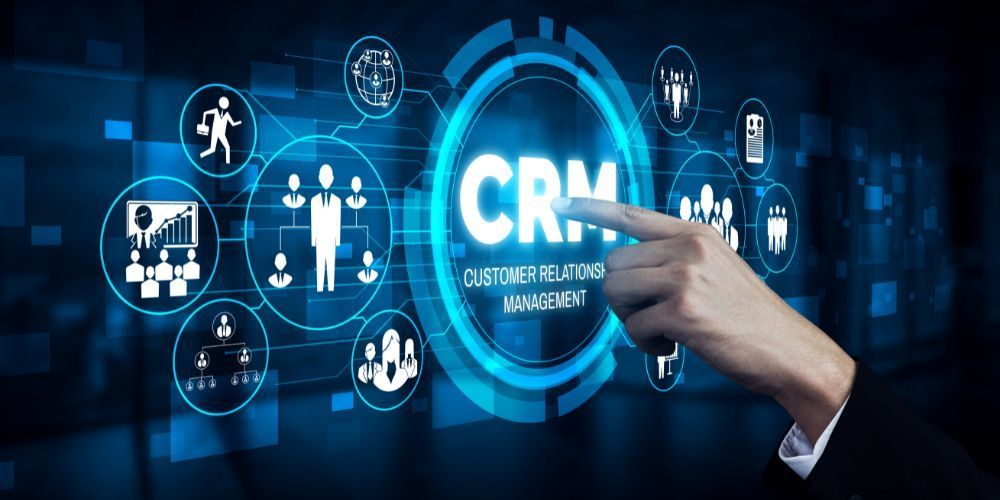Simplifying Your MarTech Stack: A Guide to Making Technology Work for Your Customers
The marketing technology (MarTech) landscape is more complex than ever, with businesses relying on multiple platforms to manage customer interactions. While these tools promise efficiency, too many overlapping or redundant solutions can create confusion, inefficiencies, and poor customer experiences. In reality, a streamlined MarTech stack often leads to better engagement, cost savings, and a more personalized customer journey. This guide explores how businesses can simplify their MarTech stack to maximize impact and improve customer experience.

1. Assessing Your Current MarTech Stack
Before simplifying, organizations must assess their existing tools and evaluate their effectiveness. Conducting a MarTech audit can help identify redundant platforms, unused features, and integration gaps. Key steps include:
- Inventory Your Tools: Begin with a comprehensive audit of all MarTech solutions used across departments, including marketing, sales, and customer support. Enterprise organizations often accumulate a vast array of tools over time, many of which may have overlapping functionalities or limited adoption. Creating a centralized database of tools, including their costs, usage frequency, and integrations, can provide a clearer picture of the existing stack.
- Evaluate Usage and Effectiveness: Assess each tool’s impact on business and customer experience goals. Large enterprises should involve cross-functional teams to determine which platforms drive meaningful outcomes. Conduct stakeholder interviews and analyze platform engagement data to understand adoption rates and performance metrics.
- Identify Gaps and Redundancies: Look for inefficiencies, such as multiple tools performing similar functions or disconnected data silos that prevent seamless customer experiences. Enterprise companies often suffer from departmental silos where different teams purchase their own solutions without considering broader integration needs.
- Align Tools to Customer Experience (CX): Ensure that each tool enhances rather than hinders the customer experience. This involves prioritizing platforms that support personalized engagement, real-time data insights, and omnichannel consistency. Large organizations should consider consolidating systems to ensure smooth customer interactions across multiple touchpoints, from digital campaigns to customer service.
To effectively streamline a MarTech stack, businesses must start by assessing their current tools, identifying redundancies, and ensuring alignment with customer experience goals. A thorough audit helps in recognizing inefficiencies and opportunities for consolidation. By prioritizing tools that enhance engagement, provide valuable insights, and integrate seamlessly, organizations can eliminate unnecessary complexity. The outcome is a more cohesive digital strategy that reduces costs, improves workflow efficiency, and enhances overall customer satisfaction.
2. Consolidation: Less is More
Many companies struggle with a bloated MarTech stack due to rapid tool adoption without a clear integration strategy. Consolidating platforms can drive efficiency, improve data accuracy, and streamline workflows. Benefits of consolidation include:
- Cost Savings: Reducing the number of MarTech tools eliminates redundant subscription costs, minimizes IT overhead, and streamlines vendor management. Enterprise organizations often face significant expenses due to overlapping software solutions, and consolidation can lead to substantial financial savings and resource optimization.
- Better Data Flow: Unified platforms enhance data consistency, ensuring customer information is accurate, accessible, and actionable across all business functions. For large enterprises, integration across multiple touchpoints—such as CRM, analytics, and automation—helps create a more comprehensive and real-time view of customer behavior, enabling personalized and targeted marketing efforts.
- Enhanced User Experience: A streamlined MarTech stack simplifies workflows for internal teams, reducing training requirements and operational bottlenecks. For customers, it ensures a seamless omnichannel experience, eliminating fragmentation between interactions on different platforms and fostering brand trust and engagement.
Case Study: Citi Bank’s MarTech Optimization
Citi Bank faced challenges with a fragmented MarTech ecosystem, leading to inefficiencies in customer data utilization. After evaluating existing platforms, the company streamlined its MarTech stack, resulting in cleaner customer data and improved marketing execution.
For enterprise organizations, MarTech consolidation is crucial to eliminating inefficiencies and reducing operational costs. By integrating systems and ensuring seamless data flow, businesses can enhance personalization and streamline internal processes. A well-structured MarTech stack fosters a unified brand experience across multiple channels while improving marketing effectiveness. Companies that successfully consolidate their MarTech tools gain better insights, optimize workflows, and create a more engaging customer journey.

3. Aligning MarTech with Customer Experience Goals
The ultimate purpose of MarTech is to enhance customer experience. For enterprises, this means creating a seamless, integrated ecosystem that delivers personalized, efficient, and contextually relevant interactions at scale. Every tool should contribute to customer engagement, personalization, and satisfaction while being fully integrated into a broader digital strategy. Companies should focus on:
- Omnichannel Engagement: Large organizations must ensure seamless integration across all digital touchpoints, including email, social media, websites, CRM systems, call centers, and in-person interactions. A fragmented experience across these channels can create customer frustration and inefficiencies. Enterprises should use customer journey mapping to align MarTech investments with critical touchpoints and ensure a unified experience across platforms.
A potential outcome of seamless omnichannel engagement is a more cohesive and personalized customer experience. When enterprises integrate all digital touchpoints effectively, they can reduce customer frustration, improve brand trust, and increase engagement rates. Additionally, streamlined MarTech investments aligned with customer journey mapping can lead to higher conversion rates, better data insights, and greater operational efficiency across departments., including email, social media, websites, CRM systems, call centers, and in-person interactions. A fragmented experience across these channels can create customer frustration and inefficiencies. Enterprises should use customer journey mapping to align MarTech investments with critical touchpoints and ensure a unified experience across platforms.
- First-Party Data Utilization: With increasing restrictions on third-party data collection, leveraging first-party data has become essential for enterprises. Organizations should invest in customer data platforms (CDPs) that unify data from multiple sources, enabling real-time insights and hyper-personalized marketing efforts. By creating a single customer view, businesses can enhance targeting precision, reduce churn, and drive lifetime value.
A potential outcome of effectively utilizing first-party data is a stronger competitive advantage through more accurate and personalized marketing campaigns. Enterprises that successfully integrate and analyze first-party data can improve customer retention, enhance brand loyalty, and create predictive models that drive proactive engagement. Additionally, regulatory compliance becomes more manageable, reducing risks associated with third-party data dependencies.
- AI-Driven Automation: AI-powered automation is critical for large-scale customer engagement. From predictive analytics and chatbots to real-time content recommendations, AI can enhance, rather than complicate, customer interactions. Enterprises should focus on AI-driven personalization engines that dynamically adapt content and experiences based on user behavior, ensuring marketing efforts remain relevant and impactful.
A potential outcome of effectively implementing AI-driven automation is a significant increase in efficiency and customer satisfaction. By leveraging AI-powered personalization, enterprises can deliver more relevant content at scale, reduce response times with intelligent chatbots, and optimize marketing campaigns based on real-time insights. Additionally, automation allows businesses to allocate resources more strategically, enabling teams to focus on high-value tasks while AI handles repetitive, data-driven processes.. From predictive analytics and chatbots to real-time content recommendations, AI can enhance, rather than complicate, customer interactions. Enterprises should focus on AI-driven personalization engines that dynamically adapt content and experiences based on user behavior, ensuring marketing efforts remain relevant and impactful.
By incorporating these strategies, enterprise organizations can create a MarTech stack that not only scales personalized customer experiences but also enhances operational efficiency and strategic agility. The integration of omnichannel engagement, first-party data utilization, and AI-driven automation fosters a seamless customer journey while optimizing internal workflows and resource allocation. Ultimately, a well-structured MarTech stack leads to increased customer satisfaction, stronger brand loyalty, and a more data-driven approach to marketing success.
4. Driving Business Impact with a Simplified Stack
A simplified MarTech stack doesn’t just reduce operational headaches—it directly impacts business performance by enhancing agility, reducing costs, and fostering data-driven decision-making.
To measure success after simplification, organizations should track key performance indicators (KPIs) such as:
- Customer Engagement: Are users interacting more with your digital assets? Increased engagement rates indicate that customers are finding more value in their interactions, leading to better retention and satisfaction.
- Conversion Rates: Has lead generation improved post-consolidation? A well-optimized MarTech stack ensures that marketing efforts are reaching the right audience, resulting in higher conversion rates and revenue growth.
- Operational Efficiency: Have internal teams reported improved workflow and reduced friction? Streamlining tools reduces redundancies, enhances collaboration across departments, and accelerates campaign execution.
- Cost Savings: Has the organization reduced licensing, maintenance, or operational expenses? By eliminating redundant tools and optimizing existing systems, businesses can achieve significant financial benefits.
- Data Accuracy and Utilization: Is data more consistent, accessible, and actionable across the organization? A simplified MarTech stack should lead to better data governance, enabling more accurate analytics and decision-making.
A streamlined MarTech stack leads to better customer experiences, improved efficiency, and higher ROI. Organizations must continuously evaluate and refine their MarTech strategy to prevent unnecessary complexity and ensure alignment with evolving business goals. By prioritizing consolidation, integrating first-party data for personalized engagement, and leveraging AI-driven automation, businesses can create a more agile and responsive digital ecosystem. This holistic approach fosters stronger customer relationships, enhances decision-making through accurate data insights, and optimizes operational workflows, ultimately driving sustainable long-term success.










